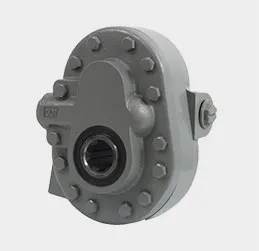pewter sand casting
Exploring Pewter Sand Casting A Timeless Craft
Pewter sand casting is a traditional metalworking process that combines artistry and craftsmanship to create intricate and functional objects. This centuries-old technique has seen a resurgence in interest, as artisans and hobbyists seek to embrace both the heritage and the versatility of pewter as a material.
What is Pewter?
Pewter is an alloy primarily composed of tin, often mixed with small amounts of copper, antimony, or bismuth to enhance its properties. Characterized by its malleability, low melting point (around 170-230°C), and shiny, silvery appearance, pewter has been used for thousands of years in various civilizations, from ancient Egypt to medieval Europe. It was widely favored for making dishes, utensils, and decorative items due to its non-toxic nature compared to other metals.
The Sand Casting Process
Sand casting is one of the most common methods of metal casting, favored for its flexibility and cost-effectiveness. The process begins with a pattern, often made from a material like wood or metal, which represents the final object. This pattern is pressed or built into a sand mixture to create a mold.
The sand used in this process is typically a special type called casting sand, which consists of fine grains mixed with a binding agent, often clay. This mixture is packed tightly around the pattern to create a two-part mold. When both halves are formed, they are separated to remove the pattern, leaving a hollow space that will be filled with molten pewter.
Once the mold is prepped and positioned, molten pewter is poured into the cavity. As the metal cools and solidifies, intricate details from the mold surface are captured in the finished piece. After the pewter has cooled, the mold is broken apart, and the newly formed object can be cleaned, polished, and finished to meet artistic or functional specifications.
pewter sand casting

Advantages of Pewter Sand Casting
One major advantage of pewter sand casting is the relative ease of producing complex shapes. Unlike other methods such as die casting, sand casting allows for intricate designs that can be easily modified by changing the mold. This adaptability makes it an ideal choice for artisan makers who wish to experiment with different forms and textures.
Moreover, due to the low melting point of pewter, the energy required for melting and pouring is significantly lower than that needed for aluminum or iron, making it an environmentally friendly option for artisans. The process can be performed on a small scale, which suits hobbyists looking to create unique pieces without the need for extensive industrial setups.
Applications of Pewter Sand Casting
The versatility of pewter sand casting extends across various domains, including jewelry making, kitchenware, and decorative art. Artisans produce everything from elegant jewelry and custom belt buckles to kitchen utensils such as measuring spoons and decorative plates. The aesthetic appeal of pewter, combined with the craftsmanship involved in sand casting, allows creators to produce limited-edition pieces with substantial artistic value.
Furthermore, the unique properties of pewter make it an excellent choice for gifts and collectible items. Items made through sand casting often have a distinct character, as each piece carries the nuances of the casting process, such as tiny variations and textures that reflect the artisan's touch. This individuality appeals to consumers seeking something more personal and meaningful than mass-produced alternatives.
Conclusion
Pewter sand casting represents a harmonious blend of art and craft, steeped in history yet thriving in contemporary culture. Its simplicity and adaptability have made it popular among both professional artisans and hobbyists. As a result, pewter remains not only a highly practical material but also a canvas for creative expression. The resurgence of interest in traditional techniques like sand casting aligns with a broader movement toward sustainable and handmade goods, making it a practice worth exploring for anyone drawn to the charm and beauty of handcrafted metalwork. Through the lens of pewter sand casting, we are reminded of the timeless nature of craft that connects generations through the mastery of material and form.
-
OEM Sand Cast Pump Valve Fittings - Baoding Hairun | Precision Engineering, CustomizableNewsJul.30,2025
-
OEM Sand Cast Pump Valve Fittings - Baoding Hairun Machinery And Equipment Trading Co., Ltd.NewsJul.30,2025
-
OEM Sand Cast Pump Valve Fittings - Baoding Hairun Machinery And Equipment Trading Co., Ltd.NewsJul.30,2025
-
OEM Sand Cast Pump Valve Fittings - Baoding Hairun Machinery|Precision Engineering&Fluid ControlNewsJul.30,2025
-
OEM Sand Cast Pump Valve Fittings - Baoding Hairun Machinery And Equipment Trading Co., Ltd.NewsJul.30,2025
-
OEM Sand Cast Pump Valve Fittings-Baoding Hairun Machinery And Equipment Trading Co., Ltd.NewsJul.30,2025















